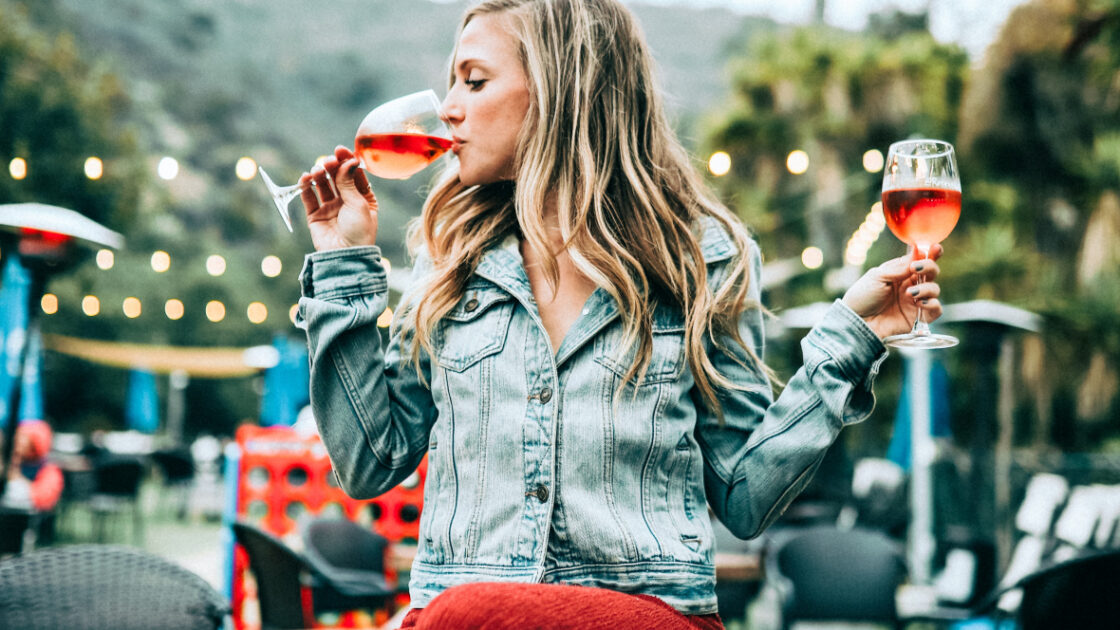Is Cameron Diaz’s ‘Clean Wine’ Cleaner Than Other Organic Wines on the Market?
Hmmm...

Actress Cameron Diaz and entrepreneur Katherine Power have teamed up to launch a new wine brand: Avaline. With two different options – a dry Spanish white, a French rosé, and a forthcoming red ($24 each) – Avaline promises to set “a new standard” for “wine at its purest,” made with organic grapes and devoid of unnecessary additives.
“For Avaline, clean means always using organically grown grapes and when needed only NOP (National Organic Program) approved ingredients, never adding animal by-products, colors and concentrates or unnecessary sugars and keeping sulfites always below 100ppm,” explains an Avaline rep. “And of most importance, being transparent so the consumer can pour with confidence.”
But experts say that using the term is misleading and problematic in an industry already rife with transparency issues.
“Oh goodness!!” says Tanisha Townsend, the Chief Wine Officer of Girl Meets Glass, a wine lifestyle and education agency. “If her wine is ‘clean’ does that mean all the other wines are ‘dirty’?”
To wit, Avaline’s marketing campaign relies heavily on consumer ignorance regarding true low-intervention or natural wine practices. (For more on this truly artisanal wine movement, check out our guide to natural wine.)
Dissecting a “Clean” Wine
Diaz’ wine’s cleanliness is based on a number of factors, but dig a bit deeper, and things are not as they appear.
To start with, the brand is not terribly clear about the origin of its wines, boasting country of origin but saying little about winemakers or processes. That means that consumers have little to go on by way of transparency, so any boasts made on the company website are taken at face value.
The company, for instance, takes pride in boasting sulfur levels under 100 parts per million – and somewhat bafflingly, as its actual sulfur levels are closer to 62 parts per million. As a point of reference, in most natural wine circles, the accepted max for this additive is something between 70 and 30 parts per million. Avaline also relies on commercial yeast rather than endemic yeast in some of its products; the latter is a no-brainer in low-intervention winemaking. And while the wines are indeed vegan, as promised, (as many wines that do not use egg white filtration are) they do use additives in the form of fining agents like pea protein, bentonite clay, and cream of tartar. While, as Townsend explains, additives are “often times necessary” and frequently used in conventional wines, the jig is up: Diaz’s wine isn’t cleaner than other organic wine out there.
“It’s just another mass-produced organic wine, you know? That’s all it is,” says Caroline Conner of Wine Dine Caroline. “Taking the word clean and attaching it to wine, and not just to wine but to a mass-produced wine, it’s like taking the whole natural wine movement, which has been working to make wine less full of crap and turning it into a shiny Barbie that isn’t even doing what it’s supposed to be doing.”
“It’s organically farmed,” adds Conner, “but I think that whatever virtue they get from that, they lose in this misleading and distracting term that they’re using.”
The Name of the Game? Transparency.
The real issue with this and other wines on the American market today, according to Conner, is a lack of transparency. Unlike other foodstuffs, there’s no requirement for wine to list all of its ingredients. To add insult to injury, some wines get away with meaningless labels like “gluten-free” (grapes have no gluten, last we checked) or “sugar-free” (by relying on small serving sizes) due to ignorance on the part of many consumers.
This is one place where Avaline does, in fact, stand out on the marketplace.
“There are other wines that meet this definition [of ‘clean’], yet they can be hard to identify on the shelf,” says a brand rep. “Avaline meets our consumers’ demand for clean with as much label transparency as possible.”
But Conner believes we can go a step further.
“The way that we solve that is educating people about wines of origin,” says Conner. “It’s by changing our labeling laws. It’s not about calling it dirty and calling something else clean.”
Instead of relying on marketing, Conner recommends shopping from small producers and, above all, doing your research and staying informed.
“I wish there was an easier answer, and I’m doing my best to make it easier and make it more fun,” she says, “but the answer is, you have to do a bit of work.”
For 103 wines that are just as “clean” – if not more so – than Diaz’s, check our list of the top organic and biodynamic wines.
Note: a previous version of this article stated that Avaline wines contain 100 ppm of sulfur. Avaline wines contain closer to 63 ppm of sulfur; “under 100 ppm” is the maximum allowed sulfur content allowed by the brand. A previous version of this article also stated that Avaline uses commercial yeasts; it actually uses both commercial and endemic yeasts.
Related on Organic Authority
A (Safe) Wine & Wellness Road Trip Escape Up California’s Central Coast
How Much Water Should You Really Be Drinking Every Day?
5 Steps to Reducing Inflammation in Your Diet

